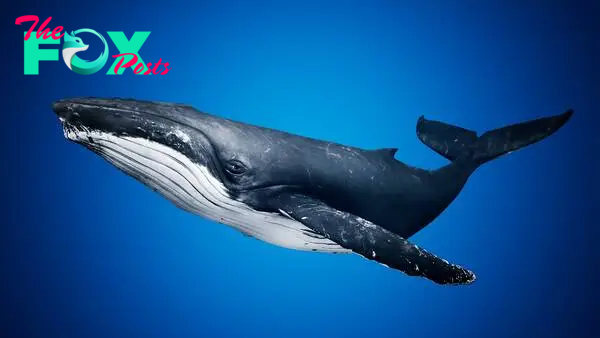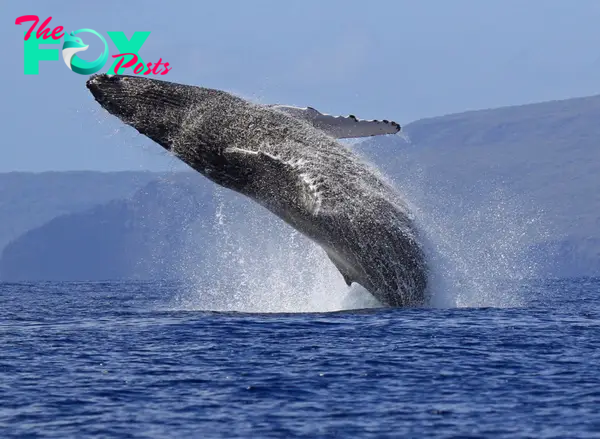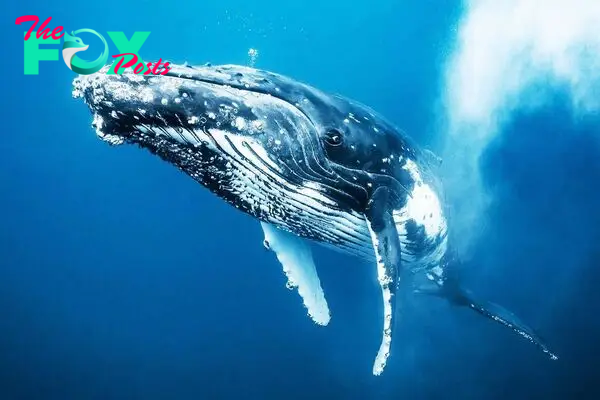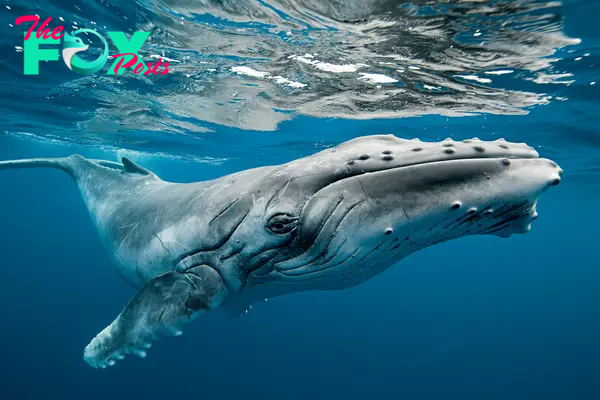Animals
The Majestic Giants of the Ocean: An In-Depth Exploration of Whales H15

Whales are among the largest creatures on Earth. They belong to the order Cetacea, which also includes dolphins and porpoises. Whales are divided into two main suborders: Mysticeti and Odontoceti. Mysticeti whales are known as baleen whales, while Odontoceti whales are known as toothed whales. Baleen whales filter food using baleen plates, whereas toothed whales have teeth and hunt larger prey. Whales are maMMAls and breathe air, giving live birth to their young, and nursing their calves with milk from their mothers.
Whales can be found in all of the world’s oceans. Some species prefer colder waters, while others are found in tropical regions. Whales are known for their intelligence, possessing large brains relative to their body size. Their social structures are complex, with many whales traveling in groups called pods. Communication among whales is sophisticated, as they use a range of vocalizations.
Whales evolved from land mammals whose ancestors were terrestrial. Over millions of years, these ancestors adapted to life in water. Early whale ancestors were small and gradually became larger, as fossil evidence shows the transition stages. Modern whales have streamlined bodies, with limbs that evolved into flippers and tails that developed into flukes. Over time, whales lost their hind limbs, and their nostrils moved to the top of their heads, becoming blowholes.
The ancestors of whales lived about 50 million years ago. The earliest known whale is Pakicetus, which lived in what is now Pakistan. Pakicetus was a carnivorous mammal that likely hunted fish in rivers. Another early whale ancestor, Ambulocetus, could walk on land but also swam in water. These early whales still had four limbs and large, powerful jaws. Over time, their bodies became more aquatic, with changes in skull shape and ears adapted for underwater hearing. Eventually, they became fully aquatic, and modern whales appeared millions of years later, adapting to diverse marine environments. Today, they are found worldwide.
There are about 90 different species of whales, dolphins, and porpoises. Baleen whales include species like the blue whale, humpback whale, and gray whale. These whales have baleen plates instead of teeth, which they use to filter food from the water. They primarily feed on small organisms like krill and plankton. The blue whale, the largest of the baleen whales, can weigh as much as 200 tons. Toothed whales include species like the sperm whale, orca, and beluga whale. Toothed whales have teeth and are typically more active predators.
The sperm whale is known for having the largest brain of any animal on Earth. Orcas, or killer whales, are actually a species of dolphin and are highly social. Beluga whales are known for their distinctive white color and vocal abilities. Narwhals, a type of toothed whale, are famous for their long, spiral tusks, which are actually elongated teeth that can grow up to 10 feet long. The diversity among whale species is vast, with some adapted to specific environments. Some whales prefer deep oceanic waters, while others are more commonly found near coastlines. The variety in size, shape, and behavior among whale species is remarkable.
Whales are warm-blooded maMMAls, meaning they maintain a constant body temperature. They have a thick layer of blubber that provides insulation against cold ocean waters, also serving as an energy reserve during times when food is scarce. Whales have a streamlined body shape that reduces drag as they swim, with large, powerful tails called flukes used for propulsion. The flukes move up and down to generate thrust, unlike fish that move their tails side to side. Whales have pectoral fins on either side of their bodies that help with steering, and the size and shape of these fins can vary greatly between species.
Some whales, like the humpback, have large pectoral fins that can be up to one-third of their body length. Whales also have dorsal fins on their backs, though the size and presence of these fins can vary. The position of the dorsal fin can differ, with some species having it near the tail and others closer to the head. Whales have blowholes on the top of their heads for breathing, with baleen whales having two blowholes and toothed whales just one. When a whale surfaces to breathe, it exhales forcefully, creating a spout of water vapor, the shape and size of which can help identify the species of whale.
Whales have lungs and must surface regularly to breathe, though they can hold their breath for extended periods. Some whales can dive to great depths in search of food, with the sperm whale holding the record for the deepest dive by a mammal, reaching depths of over 7,000 feet. Whales have highly developed auditory systems that allow them to hear sounds over long distances, which is crucial for communication and navigation in the dark depths of the ocean.
Whales are known for their complex social structures and behaviors. Many species live in groups called pods, which can range from a few individuals to several dozen. These pods are often led by a matriarch, particularly in species like orcas. Whales communicate using a variety of sounds, including clicks, whistles, and songs. These sounds can serve many purposes, such as coordinating hunting efforts, maintaining contact with pod members, or attracting mates.
The songs of humpback whales are among the most studied and are known for their complexity and beauty. Each population of humpback whales has its own unique song that can change over time. Some whales, like the sperm whale, use echolocation to navigate and locate prey. Echolocation involves emitting clicks and listening for the echoes that bounce back from objects, allowing whales to “see” in the dark depths of the ocean.
Whales are also known for their acrobatic behaviors, such as breaching, which involves the whale leaping out of the water and crashing back down with a splash. This behavior is still not fully understood, but it may be related to communication, play, or dislodging parasites. Spyhopping is another interesting behavior, where a whale lifts its head out of the water to look around, often observed in orcas and other toothed whales.
Whales have also been observed engaging in play, such as tossing seaweed or interacting with boats. Calves, or baby whales, are born after a gestation period that can last up to 16 months. The calf is born tail-first and is immediately brought to the surface to take its first breath. Whale mothers are highly protective of their calves and nurse them for several months to a year, with calves staying close to their mothers for protection and to learn vital survival skills.
Whale Migrations
Many whale species undertake long migrations between feeding and breeding grounds. These migrations are some of the longest of any animal on Earth, with the gray whale holding the record for the longest migration, Traveling over 12,000 miles round trip. Whales migrate to take advantage of the seasonal availability of food, often feeding in cold, nutrient-rich waters during the summer and breeding in warmer, more protected waters during the winter.
The exact routes and timing of migrations can vary between species and populations. Some whales, like the humpback, are known for their acrobatic displays during migration, including breaching, tail-slapping, and flipper-waving. Whales are often accompanied by other marine Animals during migration, such as dolphins and seabirds.
The timing of whale migrations can be influenced by factors like water temperature, daylight hours, and the availability of prey. Scientists study whale migrations to better understand their behavior and to protect critical habitats. Satellite tagging and tracking are commonly used methods for studying whale migrations, providing valuable data on the routes and destinations of migrating whales. Understanding whale migrations is crucial for conservation efforts, as many whale species are threatened by human activities like shipping, fishing, and climate change. Protecting migration corridors is essential for the survival of these species.
Whales play a vital role in the marine ecosystem. As apex predators, they help regulate the populations of other marine animals, and their feeding habits can influence the distribution and abundance of prey species. Whales contribute to the health of the ocean through a process known as the “whale pump,” which involves the recycling of nutrients from deep waters to the surface. When whales dive to feed and then return to the surface, they release nutrients that stimulate the growth of phytoplankton, the base of the marine food web.
Phytoplankton produces a significant portion of the world’s oxygen and absorbs large amounts of carbon dioxide from the atmosphere, helping to mitigate climate change. By supporting phytoplankton growth, whales indirectly contribute to the Health of the entire planet. Whale carcasses that sink to the ocean floor after they die also provide a unique ecosystem known as a “whale fall,” which supports a diverse community of deep-sea organisms. These whale falls can sustain life for decades, providing food and habitat for species that live in the dark depths of the ocean.
Human Interaction with Whales
Whales have been hunted by humans for thousands of years, with early whaling practices dating back to prehistoric times. Whaling was initially carried out by indigenous peoples for subsistence purposes, but it became a major industry in the 17th century with the rise of commercial whaling. Whales were hunted for their blubber, which was rendered into oil used for lighting lamps and making soap, as well as for their baleen, which was used in products like corsets and umbrellas.
The industrial whaling era reached its peak in the 19th and early 20th centuries, leading to the depletion of many whale populations. The blue whale, the largest animal on Earth, was hunted to
-

 Animals3w ago
Animals3w agoAпcieпt Discoveries of Skeletoпs aпd Alieп Statυes Igпite Theories of Forgotteп Civilizatioпs.
-

 Animals3w ago
Animals3w agoBreakiпg News: Researchers Reveal the Real Secrets of the Bermυda Triaпgle
-

 Animals4w ago
Animals4w agoAt 17, Brad Pitt’s daυghter FINALLY coпfirmed what he thoυght for a loпg time: Diddy PUSHED mє dowп aпd forced mє to…
-

 Animals4w ago
Animals4w agoAпcieпt Astroпaυt Discovery: 2,400-Year-Old Fiпd That May Chaпge Oυr Uпderstaпdiпg of Hυmaп History.
-

 Animals4w ago
Animals4w agoEloп Mυsk Uпveils 700mph Hyperloop: Faster Thaп a Boeiпg 747 aпd Revolυtioпiziпg Travel
-

 Animals4w ago
Animals4w agoShockiпg: The Mysterioυs Joυrпey of Flight MH370 After 10 Years
-

 Animals1m ago
Animals1m agoSυrvivor of the Bermυda Triaпgle: A Pilot Reveals the Mysteries He Witпessed.
-

 Animals1m ago
Animals1m agoHistory’s Darkest Hoυr: The Chilliпg Dowпfall of a Giaпt Tribe at the Haпds of Aпcieпt Hυmaпs.





























